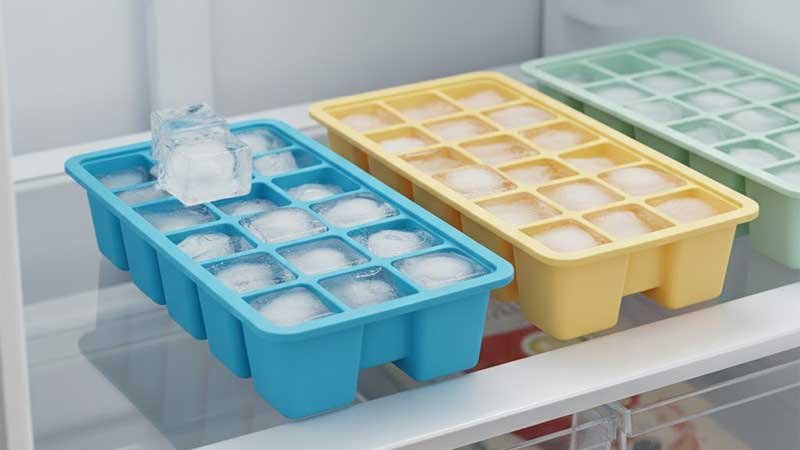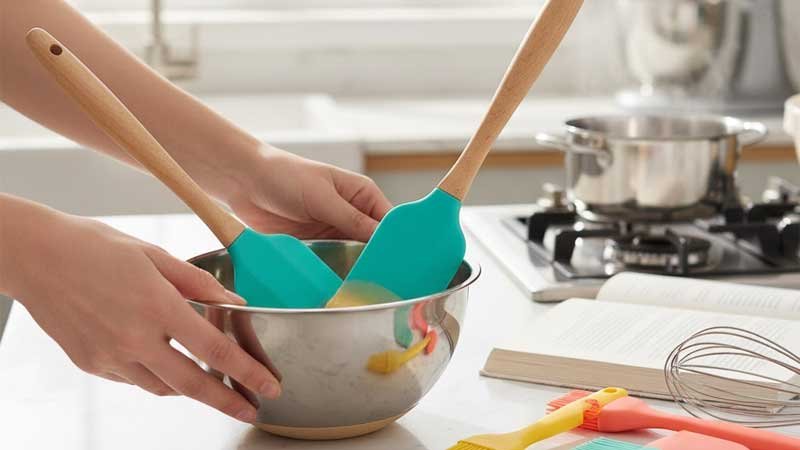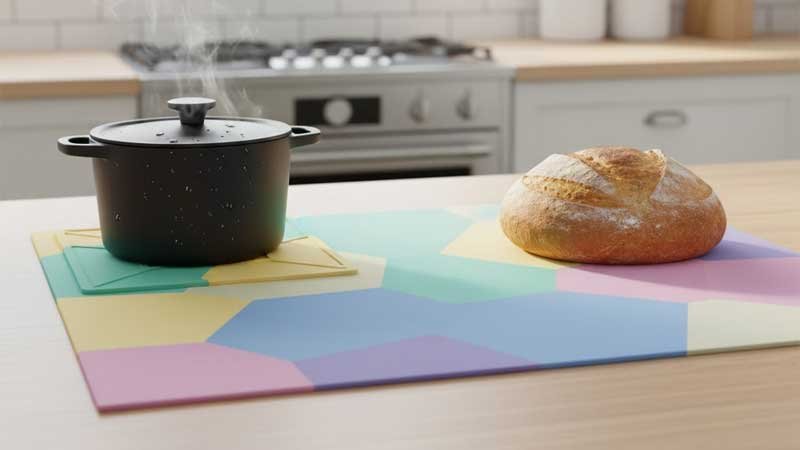Have you ever noticed a fine line on the surface of a silicone product?
This tiny mark may seem unimportant, but it plays a key role in the appearance and quality of silicone items. It is called the parting line, the seam where the upper and lower parts of the mold meet.
In this article, we’ll explain what causes parting lines, how they are controlled, and the ways to improve their appearance.

What Is the Parting Line?
A parting line appears on the joint surface of a mold, the point where the upper and lower mold halves close together.
During molding, silicone fills the cavity under high temperature and pressure. If there is even a tiny gap where the two mold halves meet, a small amount of silicone can flow into it and cure. This creates a fine raised or recessed line on the finished product.
Although small, a parting line carries several important meanings:
- It shows the boundary of the mold structure. The line marks where the two mold sections meet.
- It reflects mold precision. The higher the machining and assembly accuracy, the finer and less visible the parting line will be.
- It affects product appearance and feel. For baby products, medical devices, or consumer electronics, smoother and lighter parting lines are preferred.
A parting line is not a defect. It is a natural result of the molding process. What truly matters is how well its width, position, and texture are controlled.

How Does Mold Design Affect the Parting Line?
Mold design plays a key role in determining where the parting line appears and how visible it is. A skilled mold engineer plans the structure carefully to hide or redirect the parting surface whenever possible.
Here are the main design principles to follow.
Balance between structure and demolding direction
- The parting surface must align with the mold’s opening direction while staying away from visible areas. For example, the parting line on a silicone wristband is usually placed along the inner circle or edge rather than the front side.
Venting function
- The parting surface also allows air to escape during molding. Proper vent design helps silicone fill the mold smoothly and reduces excess flash.
Alignment accuracy
- The precision of mold components such as guide pins, locating pins, and locking systems directly affects the smoothness of the parting line. Even slight misalignment can leave raised or double lines on the final product.
Surface treatment
- Processes like polishing, sandblasting, or coating can change how visible the parting line looks. A polished mold creates a finer line, while sandblasting helps disguise it.
For instance, the parting line on a silicone pacifier mold is often placed along the outer bottom edge. On silicone keypads, it is typically found around the ring between the keycap and base. This approach ensures easy demolding while keeping the appearance neat.

How Do Material and Process Parameters Affect the Parting Line?
The formation of a parting line is not only related to the mold but also closely linked to the material properties and molding process.
Silicone type
- Liquid Silicone Rubber (LSR) has excellent flowability, allowing it to fill the mold evenly and form fine, smooth parting lines.
- High-Temperature Vulcanized silicone (HTV) is more viscous and less fluid, making it more likely to produce thicker lines or flash.
Curing temperature and pressure
- Excessive temperature can cause silicone to cure too early, leading to incomplete flow.
- If the pressure is too low, the mold cannot close tightly, and overflow marks appear along the edges.
Curing time
- A short curing time may leave the edges undercured, creating cracks or rough lines when demolding.
Mold cleanliness
- Dust, residue, or excessive release agent buildup on the mold surface can prevent tight sealing, making the parting line more visible.
In production, process engineers usually fine-tune temperature, pressure, injection speed, and venting time step by step. These adjustments help achieve smoother surfaces and better control of the parting line.

How to Treat Parting Lines After Molding?
For products with high appearance requirements, the parting line often needs secondary treatment after molding. Manufacturers choose different post-processing methods depending on the material, quantity, and precision requirements of the product.
| Method | Features | Best For |
| Manual trimming | Offers high precision and flexible control but low efficiency | Small-batch or custom high-end products |
| Cryogenic deflashing | Removes flash by freezing and blasting with media; fast and consistent results | Large-volume precision products such as baby items or electronic parts |
| Chemical or plasma cleaning | Removes micro-flash and improves surface energy | Medical and electronic applications |
| Polishing, sandblasting, or texturing | Adjusts surface gloss and feel while masking the parting line | Consumer electronics and decorative products |
For example, silicone baby nipples are often processed with cryogenic deflashing to remove visible seams. Silicone baking mats typically use sandblasted molds, where the fine texture hides the parting line and adds a non-slip, refined finish.
How to Control Parting Lines in Production?
Parting lines are a common appearance issue in silicone product manufacturing. Their formation is influenced by design, mold machining, and molding processes. Ensuring a smooth and attractive surface requires systematic control at every stage. The table below summarizes common control strategies and practical measures:
| Control Stage | Optimization Strategy | Details |
| Design | Choose an appropriate parting surface | Avoid visible front and main touch areas. Hide parting lines on edges, inner rings, or bottom grooves while ensuring smooth demolding and good appearance. |
| Mold Machining | Improve machining precision and reduce alignment errors | Use high-precision CNC and EDM. Keep guide pin, bushing, and alignment pin gaps within ±0.01 mm. Ensure tight mold closure to minimize raised or double-line marks. |
| Mold Maintenance | Regularly clean joint surfaces and maintain good closure | Remove residual silicone and dust before and after production. Lubricate guide pins and prevent sticking or slight misalignment that causes flash. |
| Molding Process | Optimize vulcanization temperature, pressure, and time | Apply moderate clamping force, maintain uniform mold temperature, and control curing time. Ensure silicone fills evenly and reduce flash and line marks. |
| Quality Control | Establish strict parting line evaluation standards | Set height tolerances. Use visual inspection, microscopes, or projectors. Trace and adjust immediately if issues occur. |

Conclusion
A parting line may be tiny, but it reflects the expertise of the entire silicone manufacturing system. It reveals mold precision, process maturity, production stability, and a company’s commitment to quality. In top-tier silicone factories, a parting line is no longer a flaw. Instead, it is a carefully controlled mark, almost invisible to the eye.
With decades of experience and advanced technology, our company excels at producing high-quality silicone products. Partner with us to create custom silicone items that combine precision, durability, and flawless appearance. Contact us today and let our expertise bring your design vision to life.